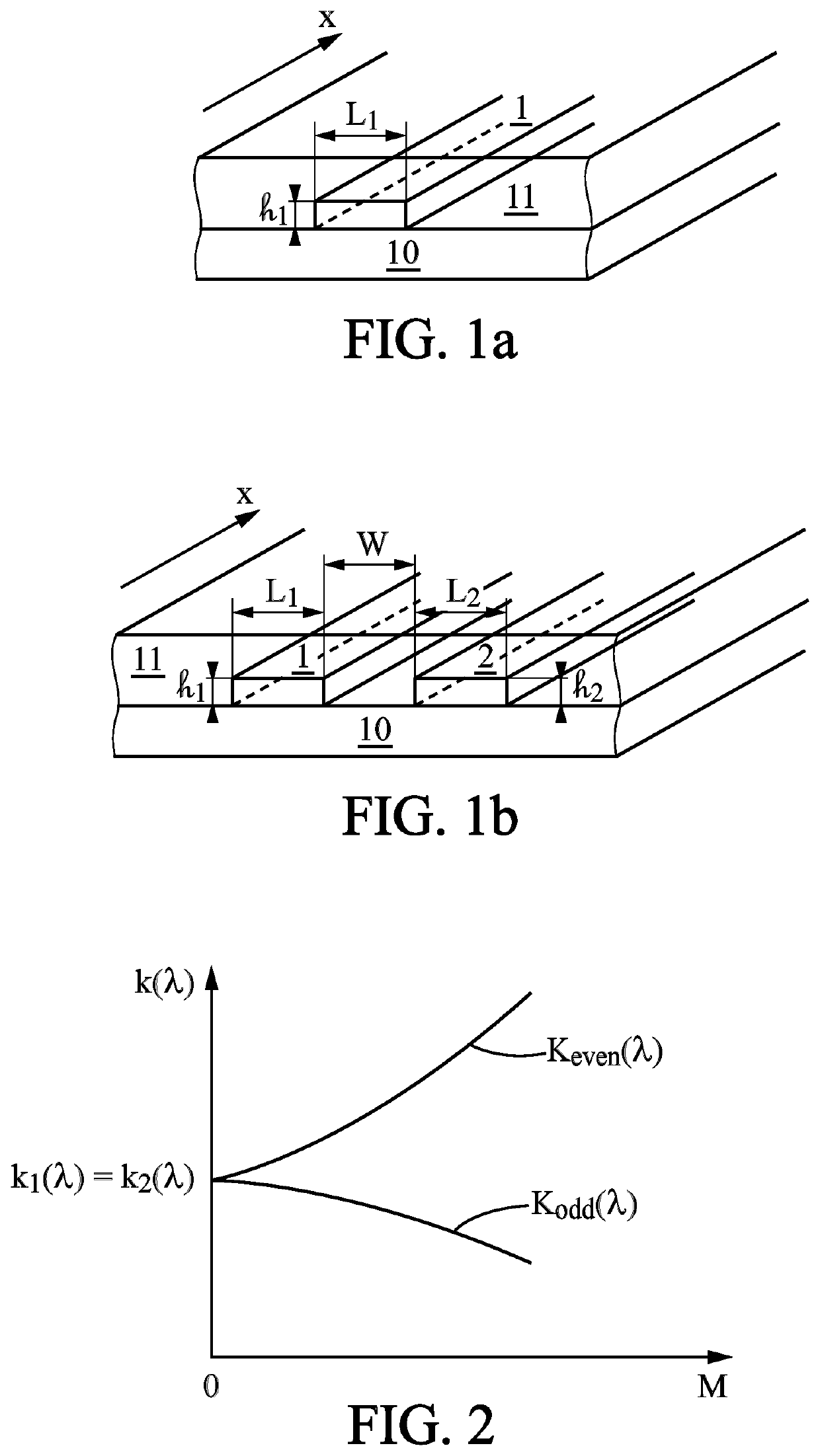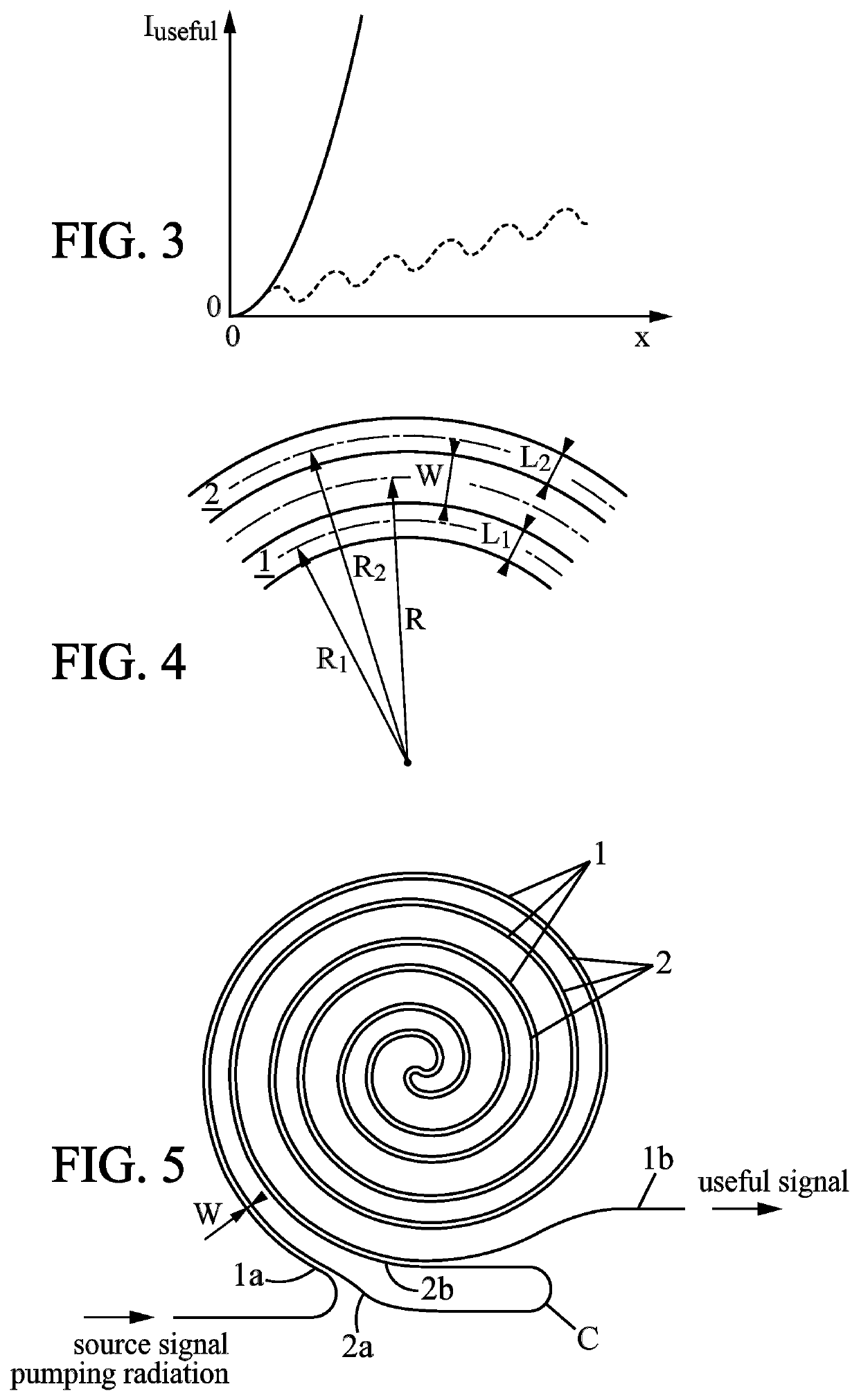Method for transposing the frequency of an optical signal by mixing a plurality of waves
a technology of optical signal and waveguide, which is applied in the direction of instruments, non-linear optics, optics, etc., can solve the problems of insufficient number of parameters of waveguide available, inability to achieve in this way an intensity of useful signal, and high cost of radio source operating in this spectral range. achieve the effect of reducing the efficiency of multi-wave mixing
- Summary
- Abstract
- Description
- Claims
- Application Information
AI Technical Summary
Benefits of technology
Problems solved by technology
Method used
Image
Examples
Embodiment Construction
[0051]For clarity sake, the dimensions of the elements that are shown in these figures correspond neither to actual dimensions nor to actual dimension ratios. In addition, identical reference signs that are indicated in different figures denote elements that are identical or that have identical functions.
[0052]Moreover, the invention is described hereafter in the case of four-wave mixing such as that resulting from a Kerr effect, and in the case of a pumping radiation that is degenerate: λpump1=λpump2=λpump using the notations of the general part of the present description. However, a person skilled in the art will be able to apply this description to a case of pumping radiations that are not degenerate without exercising inventive skill, and also to the case of a non-linear interaction that produces a different wave mixing process.
[0053][FIG. 1a] shows a waveguide that is produced in an integrated optical circuit, and the structure of which may be used to implement the invention. R...
PUM
| Property | Measurement | Unit |
|---|---|---|
| lengths | aaaaa | aaaaa |
| lengths | aaaaa | aaaaa |
| lengths | aaaaa | aaaaa |
Abstract
Description
Claims
Application Information
 Login to View More
Login to View More - R&D
- Intellectual Property
- Life Sciences
- Materials
- Tech Scout
- Unparalleled Data Quality
- Higher Quality Content
- 60% Fewer Hallucinations
Browse by: Latest US Patents, China's latest patents, Technical Efficacy Thesaurus, Application Domain, Technology Topic, Popular Technical Reports.
© 2025 PatSnap. All rights reserved.Legal|Privacy policy|Modern Slavery Act Transparency Statement|Sitemap|About US| Contact US: help@patsnap.com


